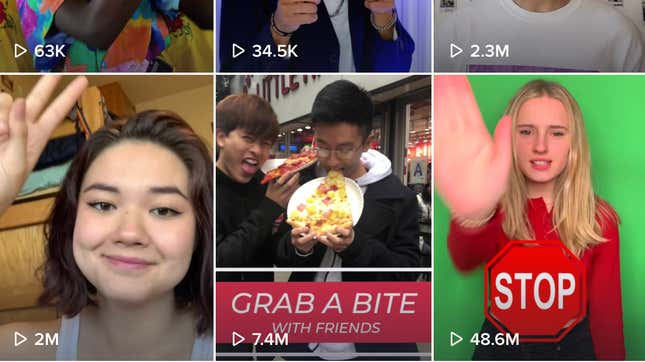
In recent weeks, I have succumbed to the insidious allure of TikTok, an app that requires nothing more from me than my undivided attention. When watching television or reading are unpalatable, TikTok’s algorithm is the only thing I can concentrate on, and my extended stints on the app, slumped in a chair drinking ice water and not thinking, aren’t my proudest moments. It’s very easy to get sucked in, though, and part of TikTok’s appeal is that time simply disappears when you’re on the app, making the general drudgery of being alive right now somewhat more bearable—an hour of time that I’ll never get back is not that great a loss right now, because really, what else is there to do?
Reconciling my discomfort with the amount of time I spend on an app clearly meant for teens has been easy enough, because time is in surplus and I’m hopeful that I will forget most of 2020 when 2021 rolls around. However, during a recent TikTok binge the other night, a curious video interrupted my doom-scrolling. In between countless videos of squat challenges and grainy footage of Kermit the Frog dancing to music from Hamilton, an earnest brunette man with a toothy grin urged me to stop what I was doing, put the phone down, and go to bed.
The message itself was jarring enough to yank me out of my reverie and to consider what the person was asking. The message worked. I put my phone down, got some water, and went to bed, pleased with my own self-restraint. The message itself wasn’t an anomaly, though. It’s a calculated attempt by the app to prove to its users that their mental health and safety are top priorities, assuring users that even though their livelihood depends on their eyeballs, they care, too. TikTok is acting as if it is a person, with your best interests in mind, caretaking even though its ultimate objective is to get you to tune in, drop out, and never, ever leave.
In February, TikTok launched a Screen Time Management tool that explicitly allows parents to control the amount of time that their children spend on the app. The video that I saw urging me, an adult woman, to put my phone down and go to bed, is part of a larger initiative that was rolled out in October, tapping creators on the app to record these small PSAs in the hopes that by using the people these teens idolize, the message will actually resonate. It’s a clever trick meant to suggest that TikTok is actually concerned about its users. (Or at least the ones it’s not trying to monetize.) If it works for the teenagers that populate the app, then their job is done. But it’s foolish to be swayed by any false promises from a company that relies on viewership for survival. Pretending that it cares by issuing PSAs that do nothing other than provide a brief interruption to the never-ending stream of content that can be easily dismissed is disingenuous—a way of acknowledging that there might be a problem (or potentially anticipating one) without addressing it head-on.
While the tone of these PSAs is less cloying than those of the retailers who reacted to the pandemic with a discomfiting reassurance that they, too, are here for you, the message is the same. TikTok is here for you and really, truly cares, just as long as you never, ever leave.